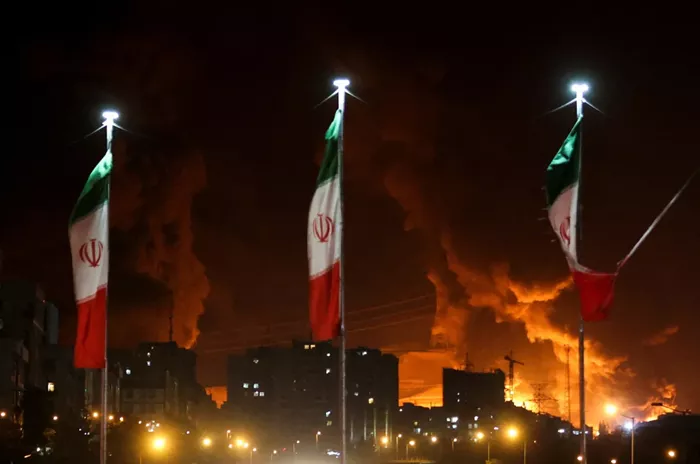Oil prices surged to their highest levels since January on Monday, following U.S. military strikes on Iran’s key nuclear facilities over the weekend. The attack, which marked a major escalation in Middle East tensions, raised concerns over a potential disruption to global crude supplies.
As of 05:03 GMT, Brent crude futures climbed $1.52, or 1.97%, reaching $78.53 a barrel. U.S. West Texas Intermediate (WTI) crude also jumped $1.51, or 2.04%, to $75.35. Both benchmarks had briefly spiked over 3% earlier in the session, with Brent hitting $81.40 and WTI reaching $78.40—levels not seen in over five months—before paring back some gains.
Escalating Tensions Drive Market Anxiety
The price rally followed U.S. President Donald Trump’s announcement that American forces had “obliterated” several of Iran’s primary nuclear sites in coordination with Israeli military actions. The strikes, carried out over the weekend, have significantly heightened the risk of broader regional conflict, with Iran promising retaliation.
Iran, a founding member of OPEC and its third-largest crude producer, plays a critical role in the global energy market. Analysts fear a potential Iranian response could include closing the Strait of Hormuz, a strategic chokepoint through which nearly 20% of global oil supply passes.
“The current geopolitical escalation provides the fundamental catalyst for Brent prices to traverse higher and potentially spiral towards $100, with $120 per barrel appearing increasingly plausible,” said Sugandha Sachdeva, founder of research firm SS WealthStreet in New Delhi.
Strait of Hormuz in the Crosshairs
Adding to the uncertainty, Iran’s state-run Press TV reported that the country’s parliament had approved a motion to close the Strait of Hormuz. Although Iran has issued similar threats in the past without following through, the latest developments have increased the perceived risk.
June Goh, a senior analyst at Sparta Commodities, noted that even though some pipeline alternatives exist, they cannot fully compensate if the strait becomes inaccessible. “The risks of damage to oil infrastructure have multiplied,” Goh said. She added that global shipping companies may start avoiding the region altogether.
Goldman Sachs echoed the sentiment in a recent note, estimating that Brent prices could temporarily spike to $110 per barrel if oil flows through the strait are halved for one month. The bank projected a sustained 10% shortfall in supply could persist for nearly a year, although it currently assumes no major disruption.
Broader Market Reactions and Political Appeals
Since the conflict intensified on June 13, Brent crude has gained approximately 13%, while WTI is up around 10%. Despite the economic risks, analysts warn that a prolonged closure of the Strait of Hormuz could also backfire on Iran, as its own economy heavily relies on oil exports via the same route.
“This is a double-edged sword,” said Sachdeva. “A sustained blockade would severely damage Iran’s own revenue stream.”
Meanwhile, international calls for de-escalation are growing. Japan on Monday urged all parties to reduce tensions, while South Korea’s vice industry minister expressed concern about the potential fallout on global trade and energy markets.
Global Outlook Remains Uncertain
While the full scope of Iran’s response remains unclear, markets are bracing for further volatility. The latest developments underscore the fragility of global energy security and highlight how quickly geopolitical events can upend oil markets.


